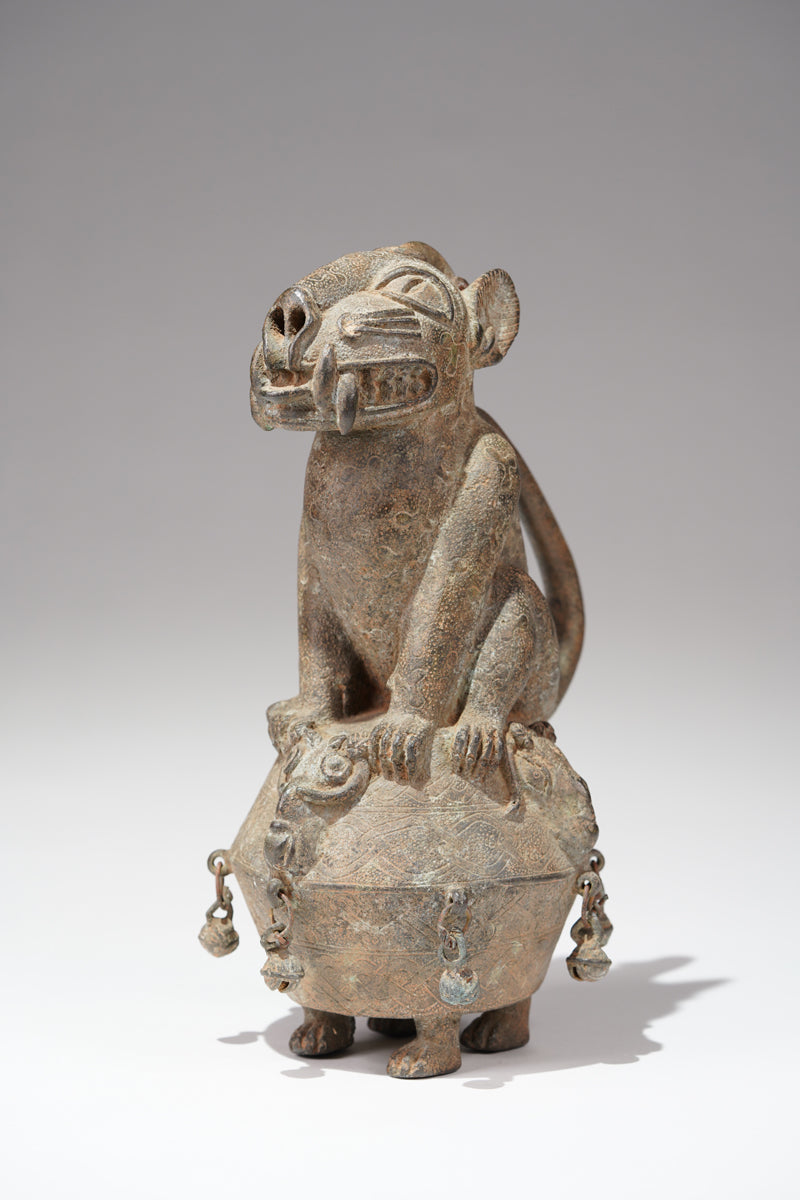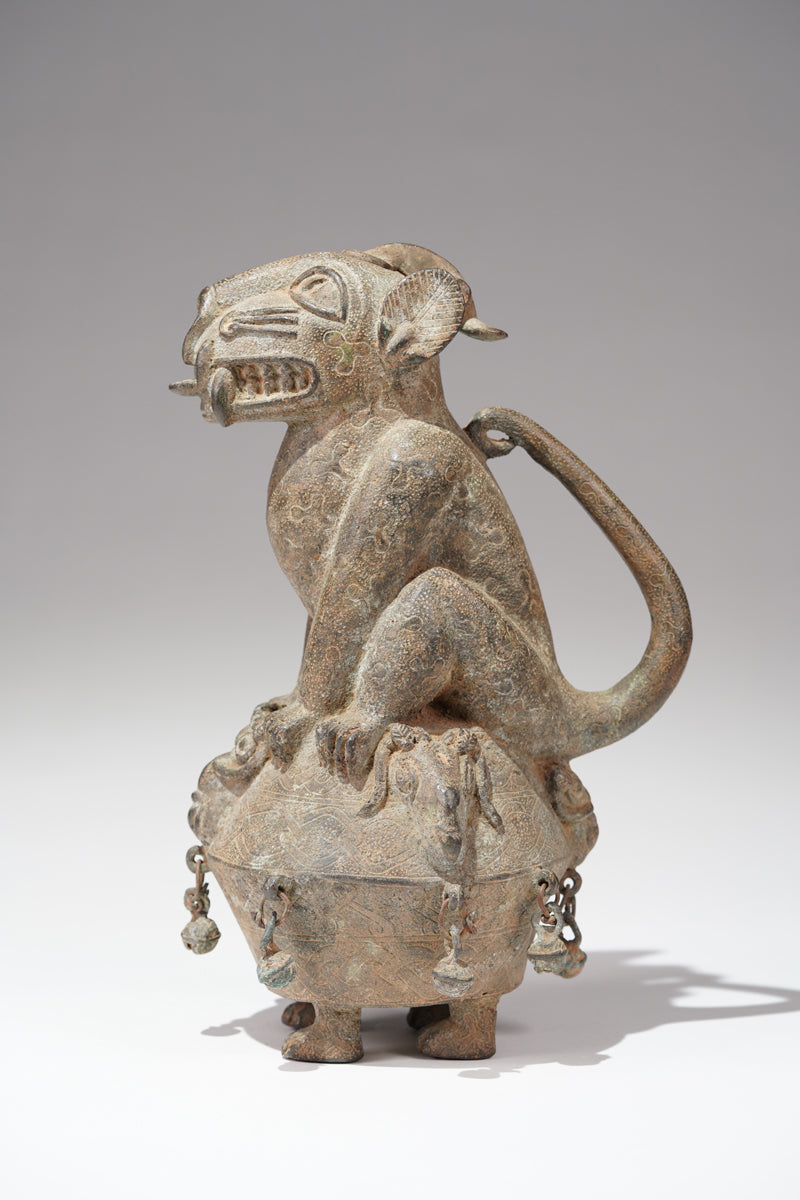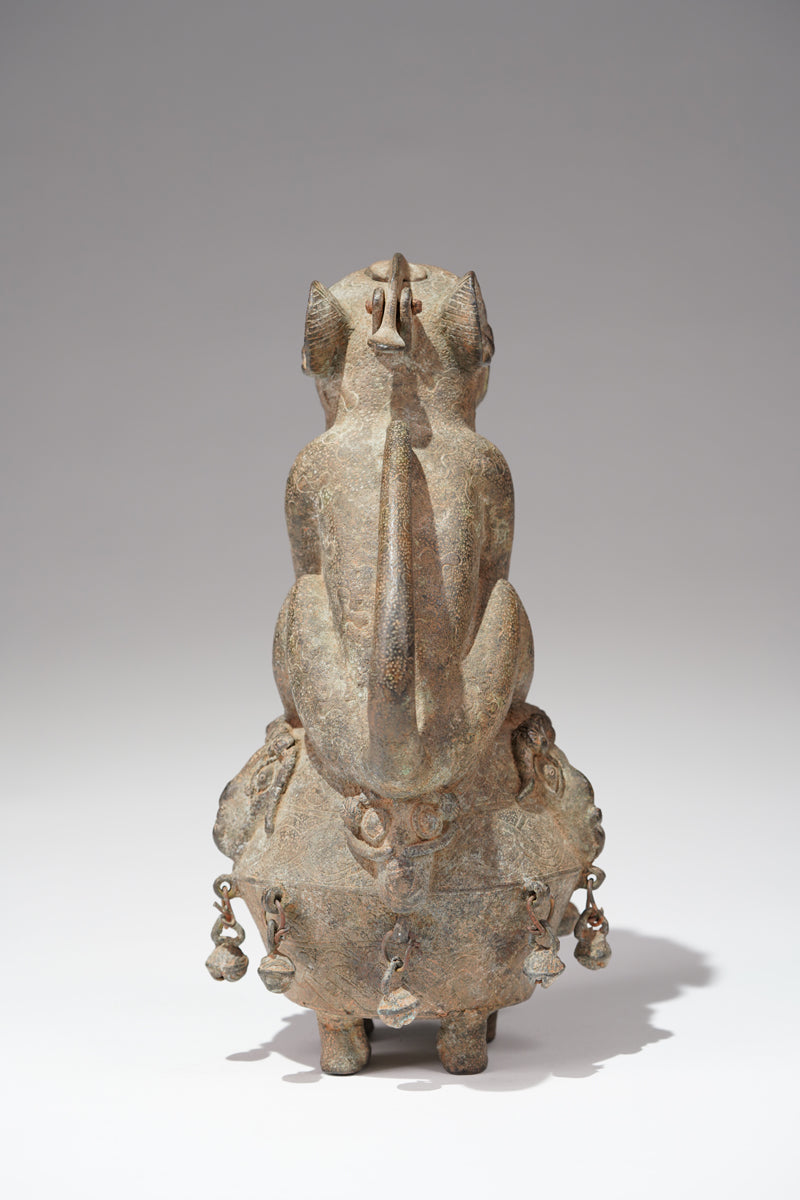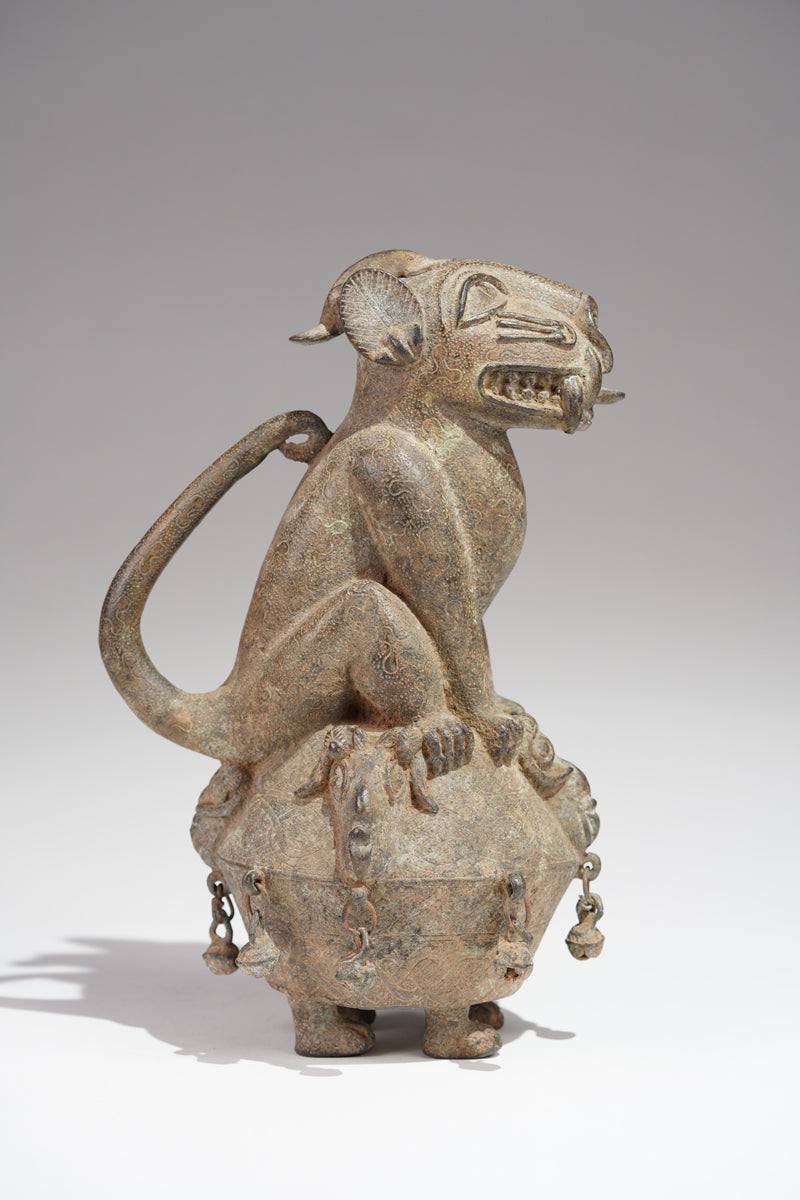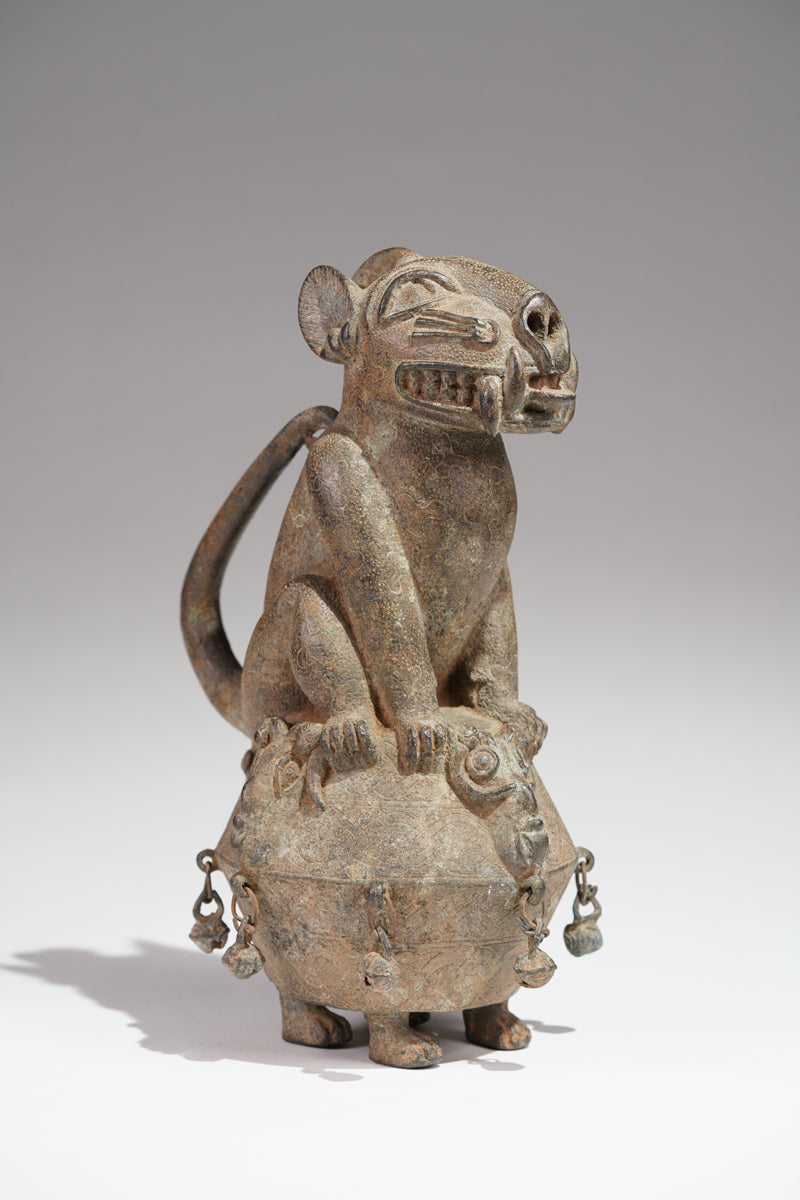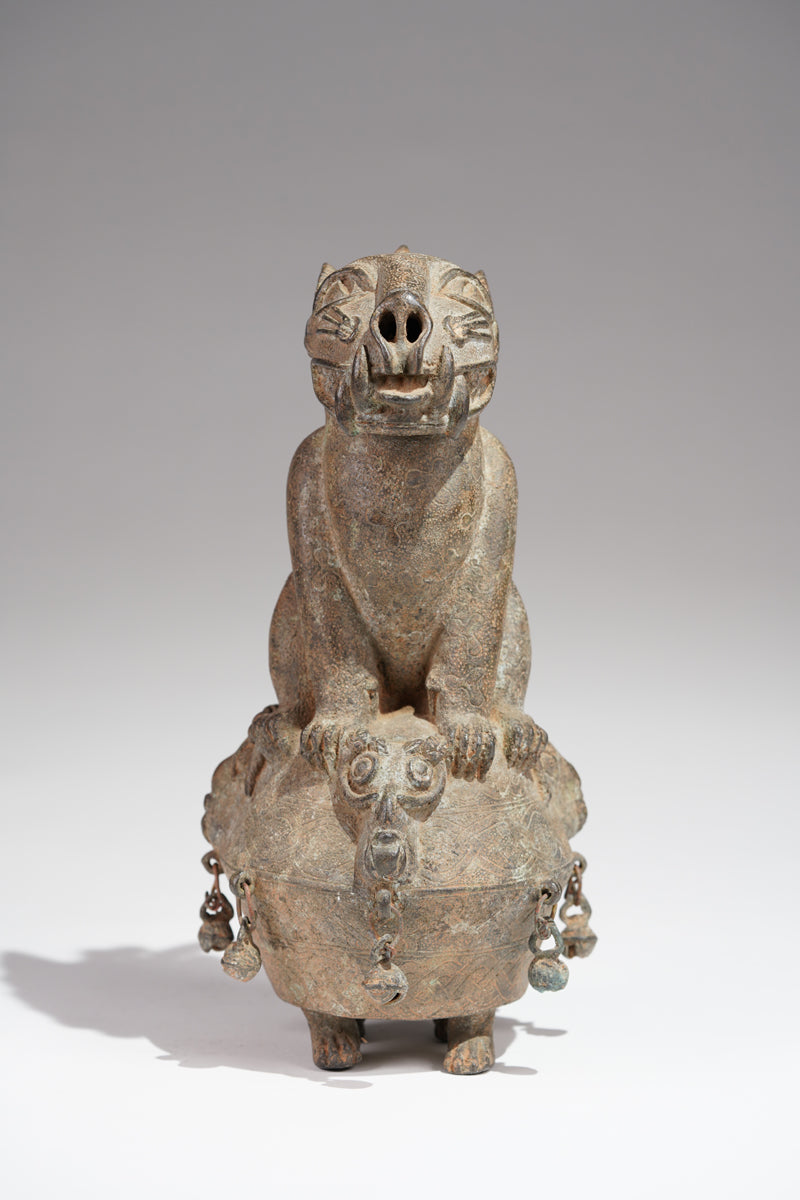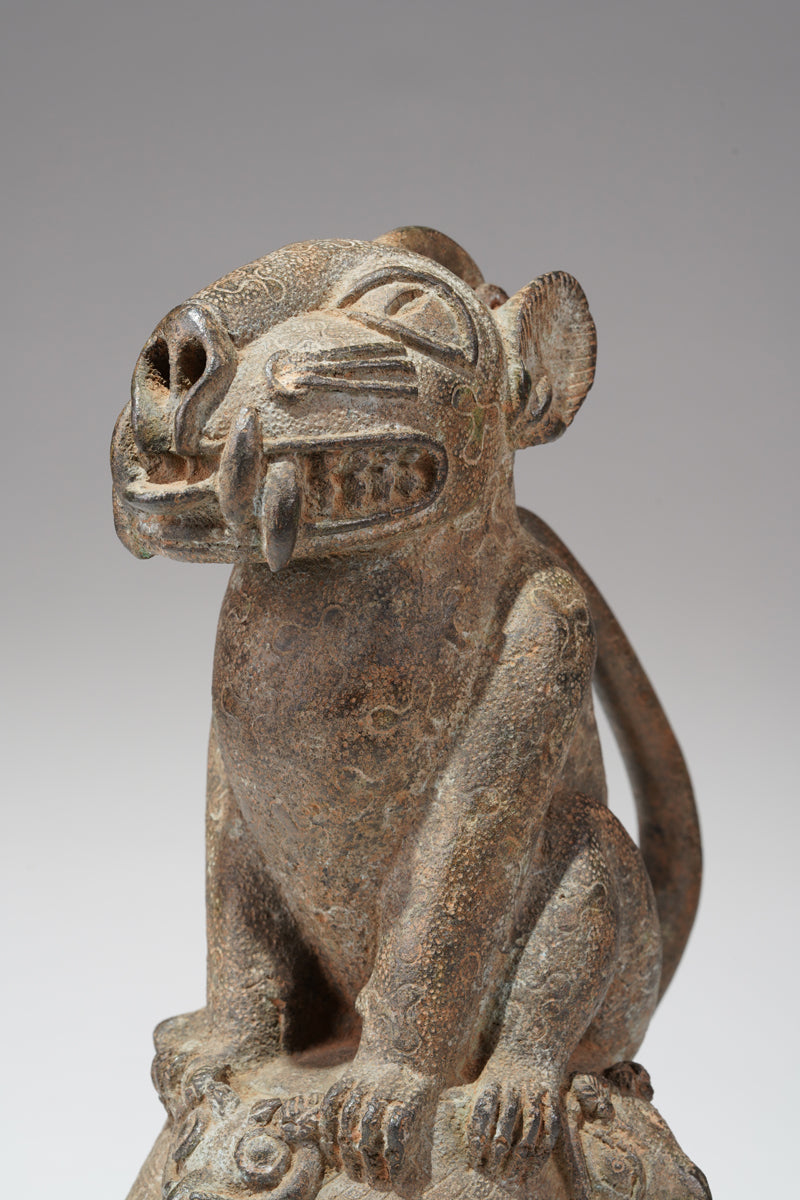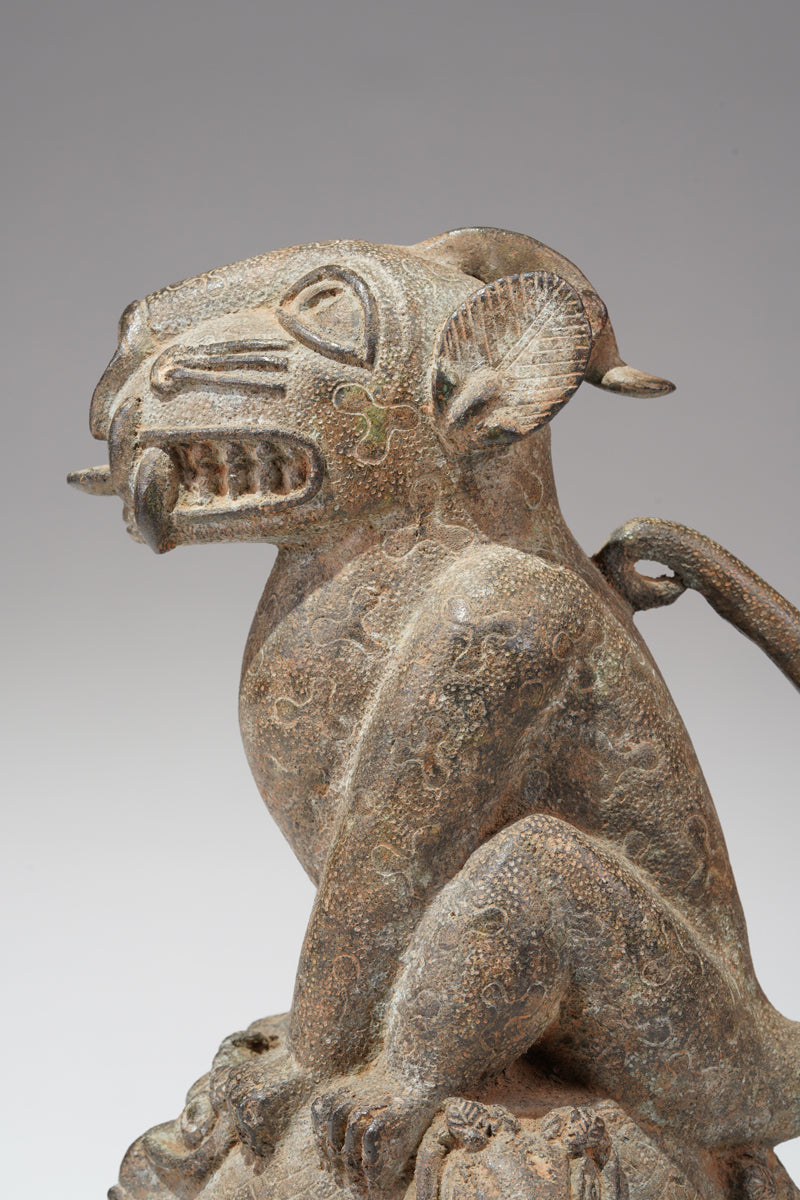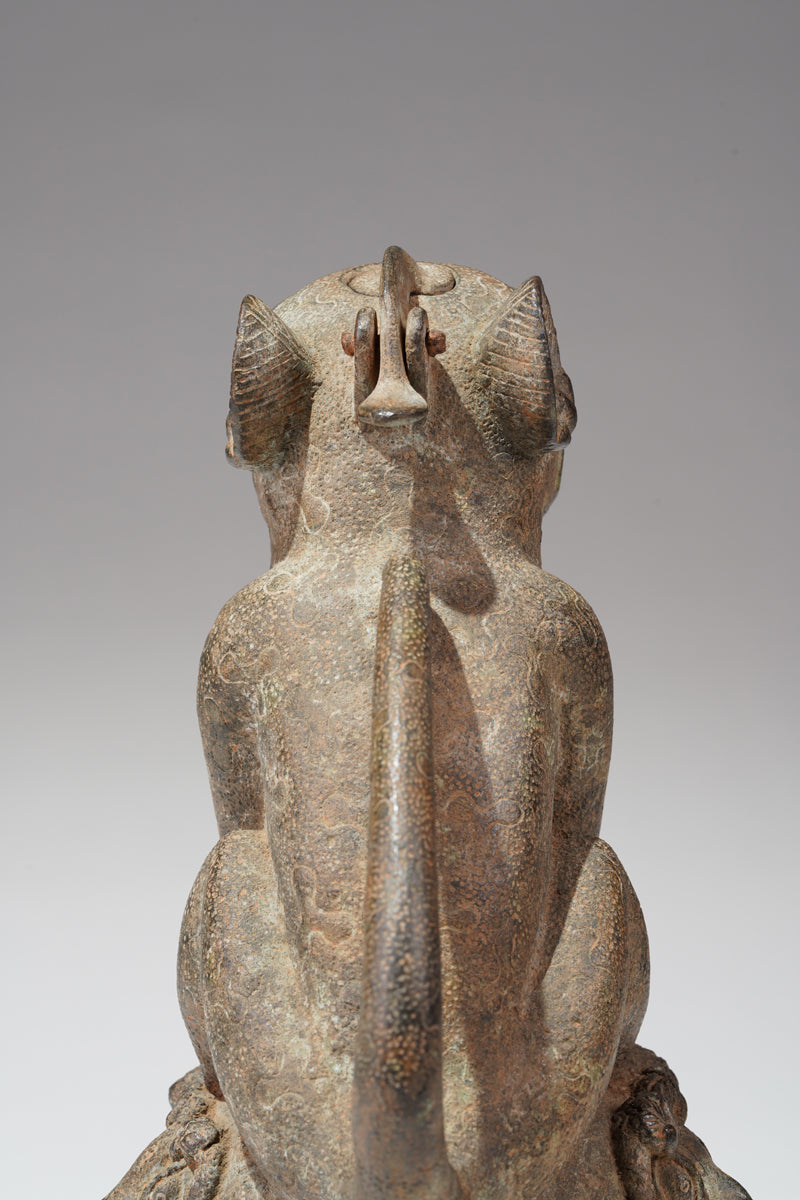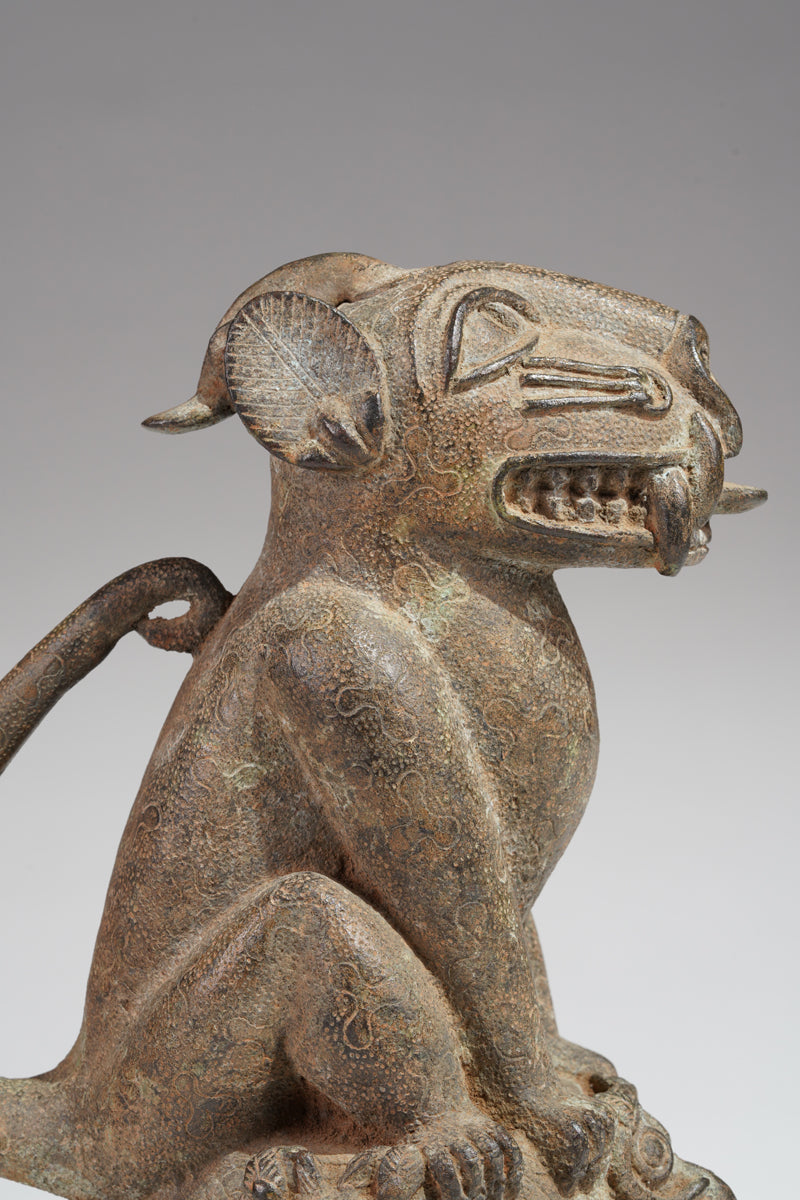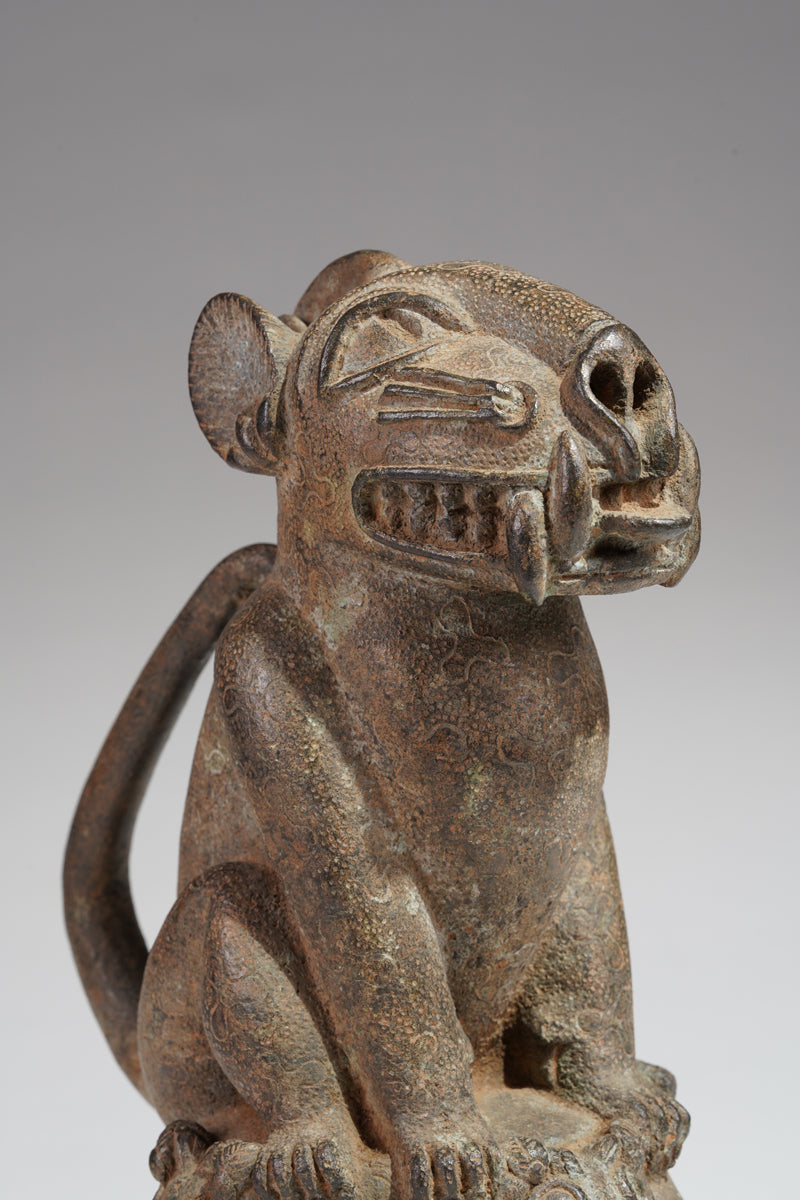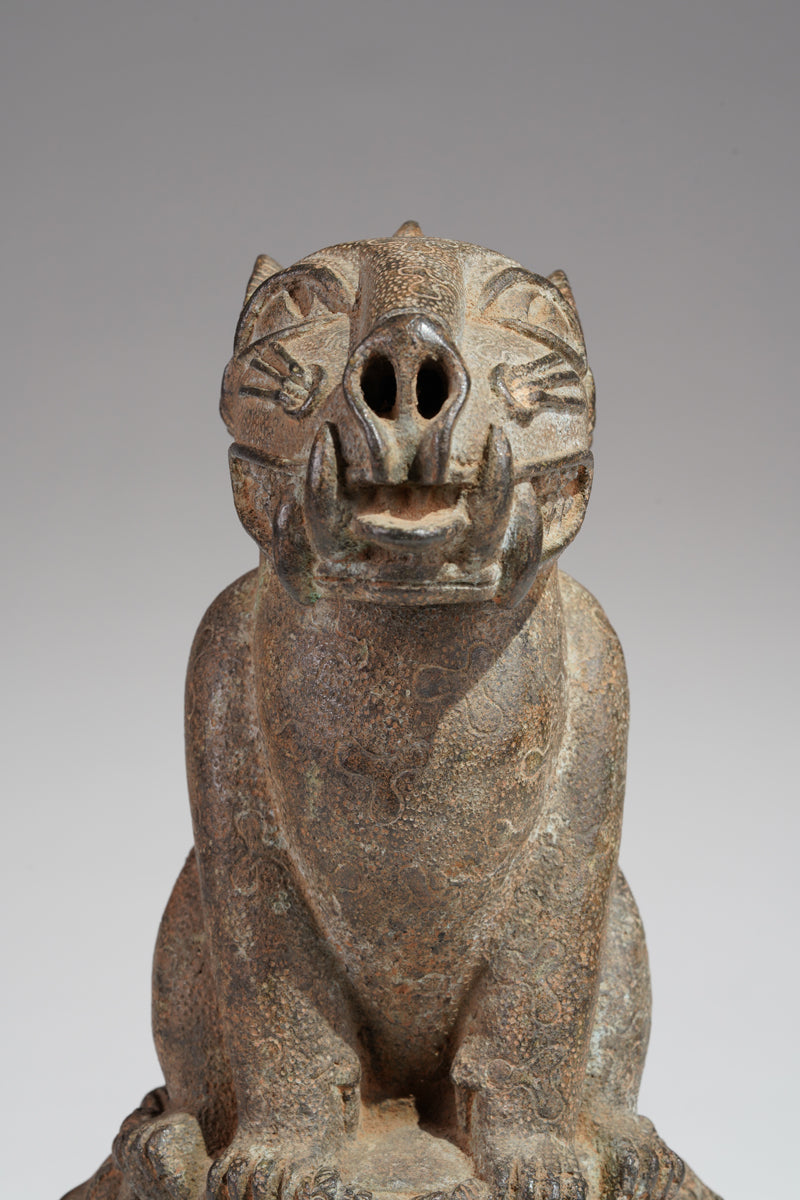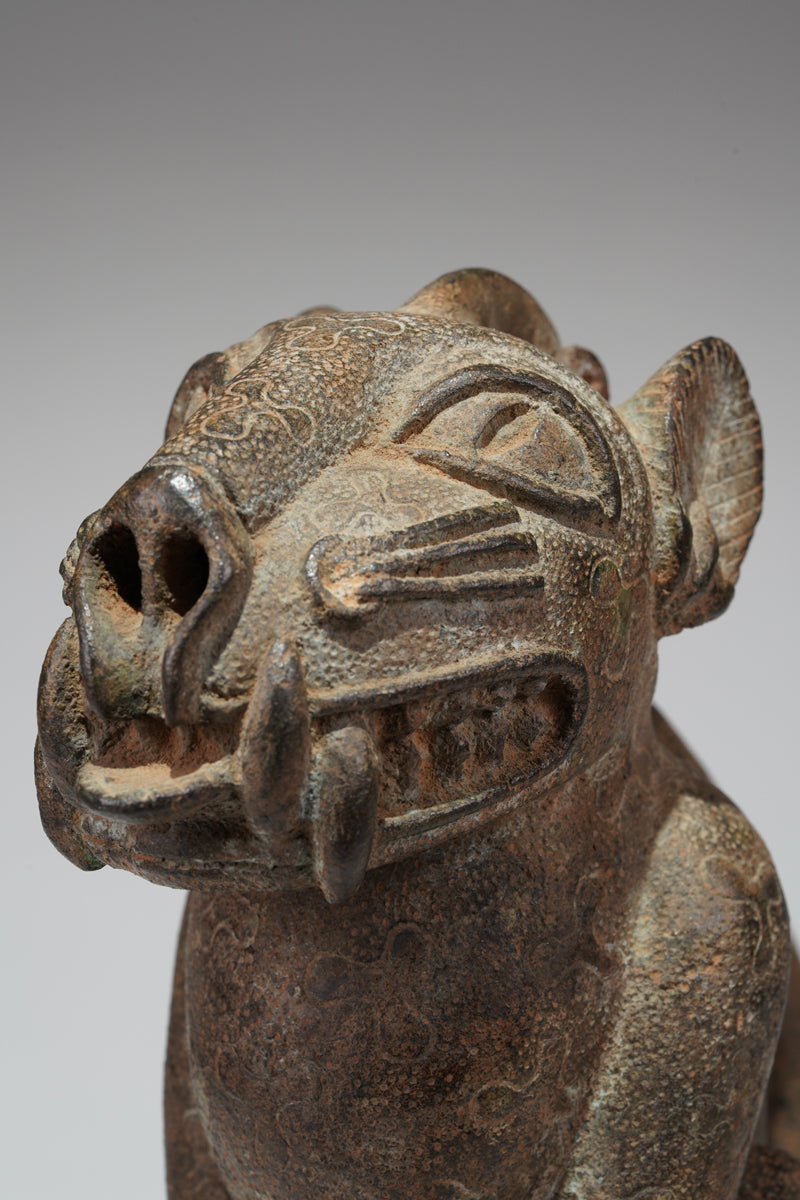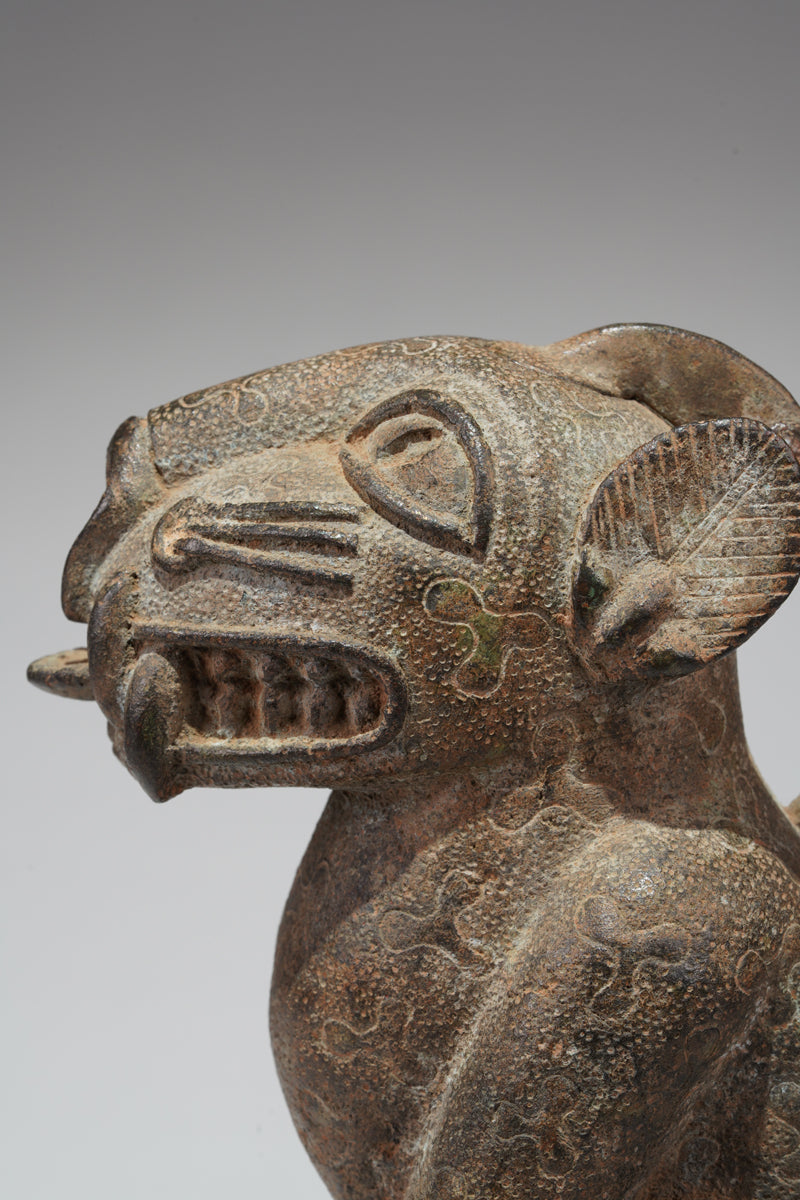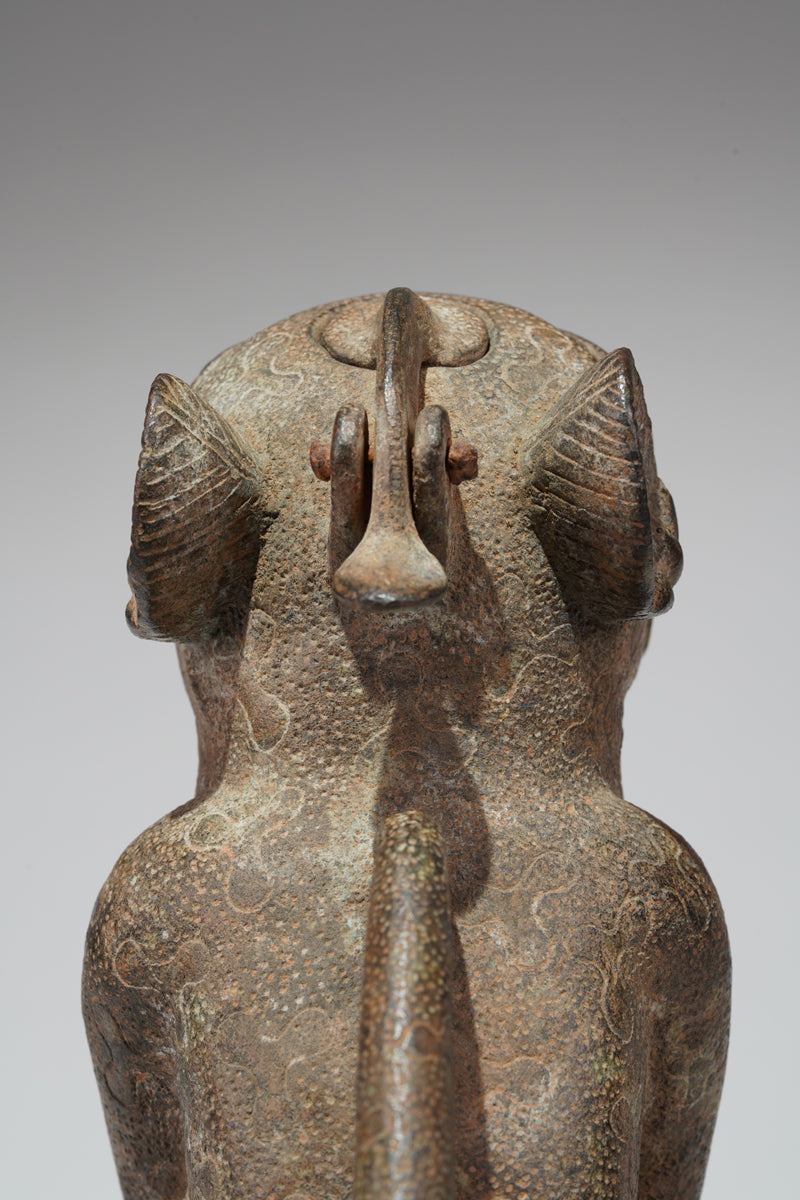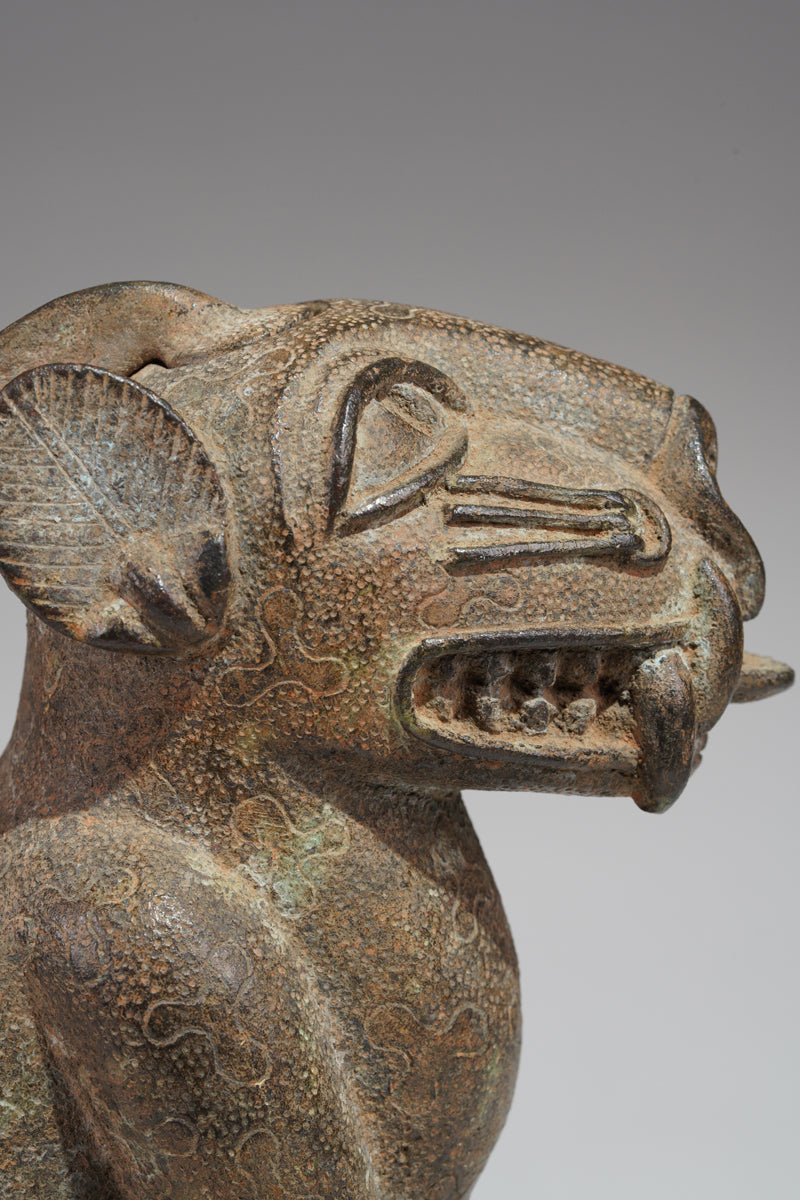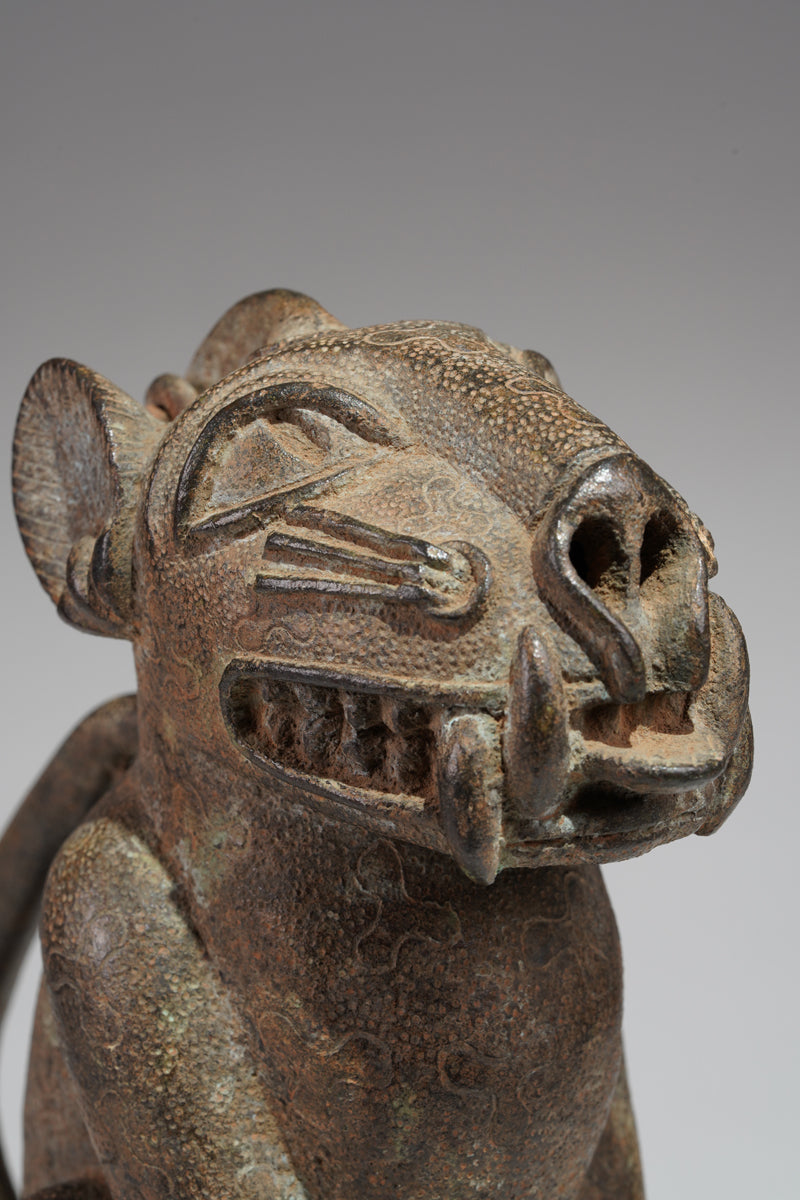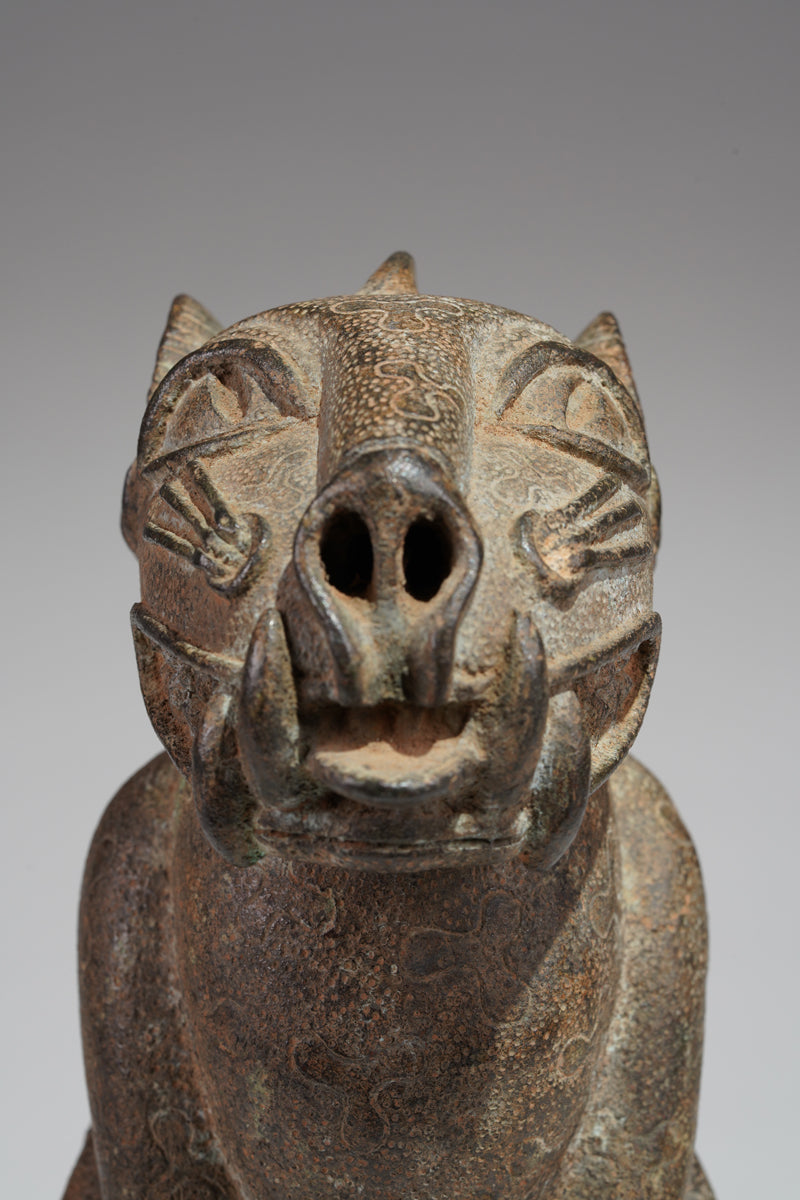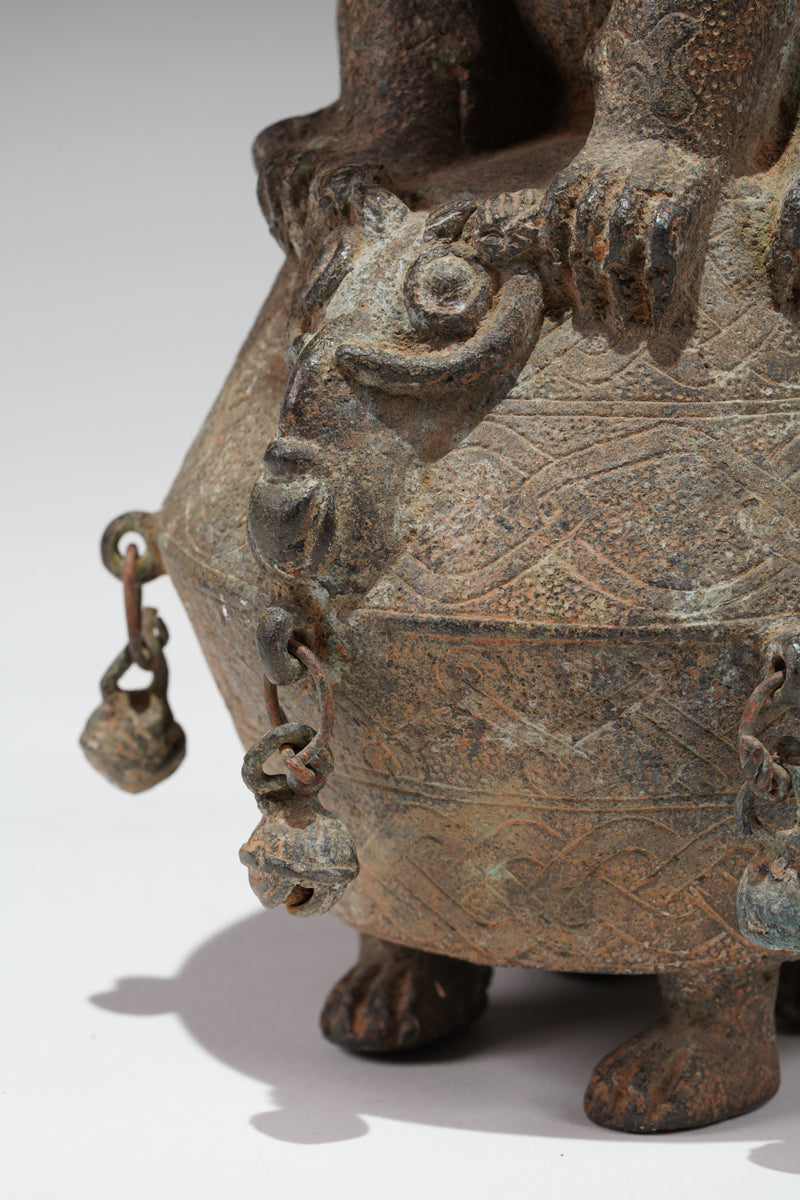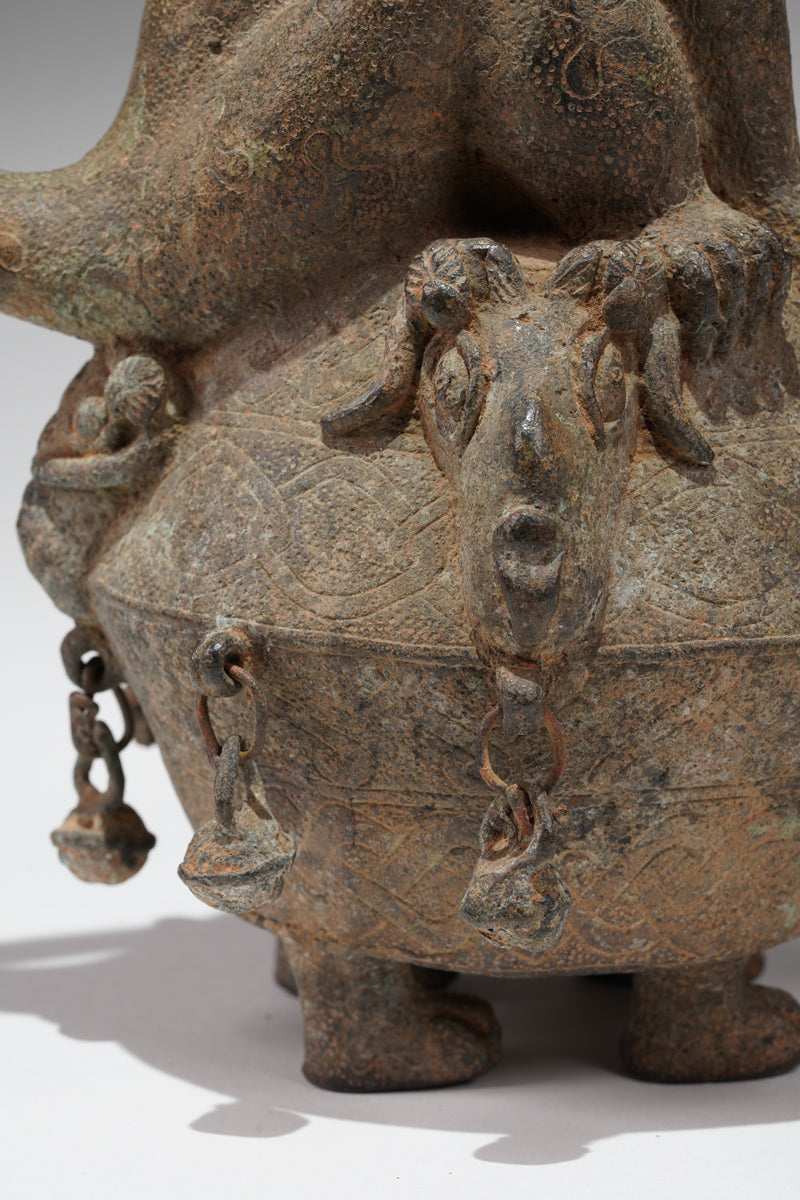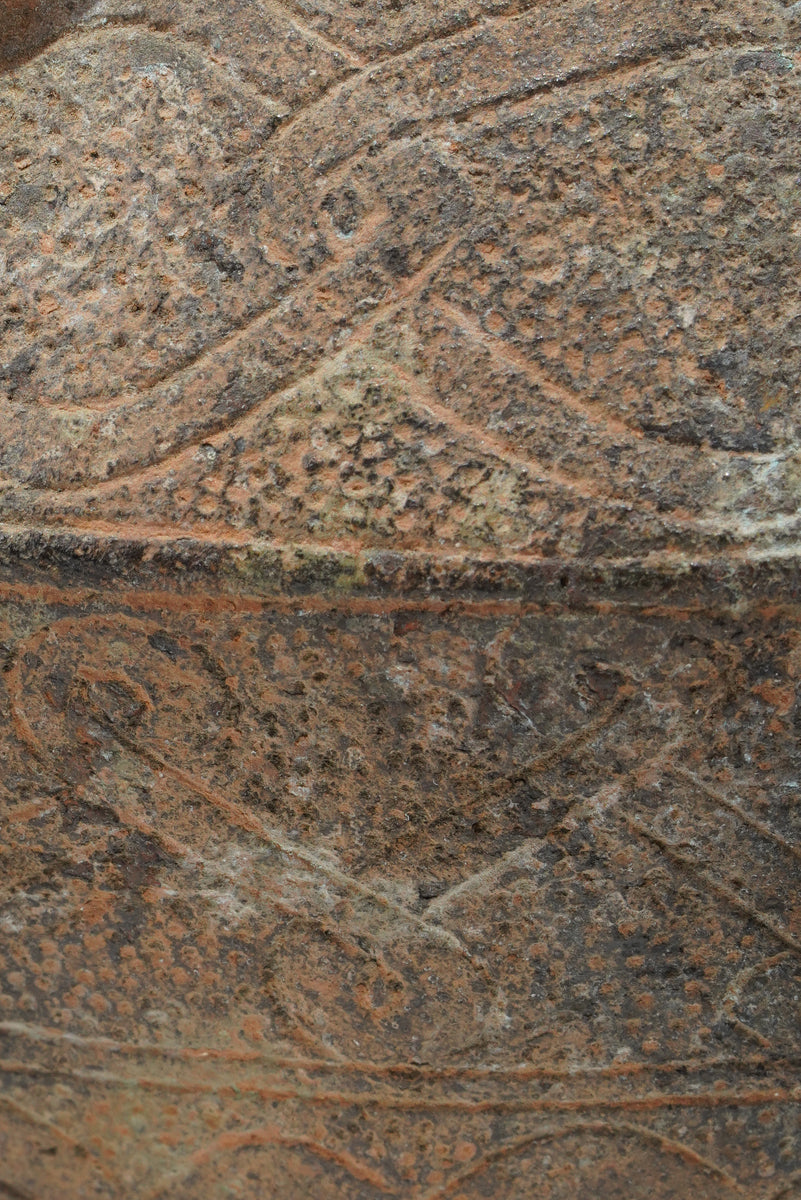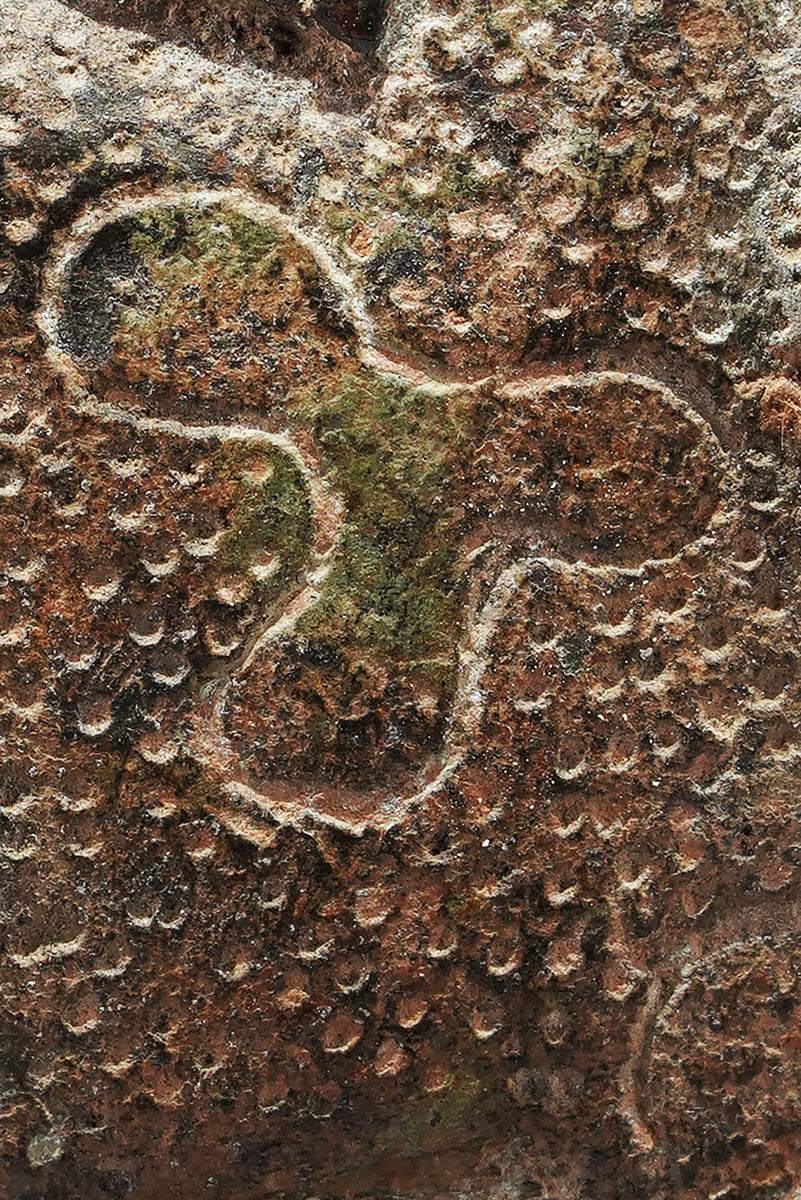wolfgang-jaenicke
An Uzokpo (lidded bowls) bronze leopard container
An Uzokpo (lidded bowls) bronze leopard container
Couldn't load pickup availability
An Uzokpo (lidded bowls) bronze leopard container in shape of an aquamailla. A leopard posted on a rhomboid vessel,, decorated with heads of four rams, casted of bronze in the style of Benin, uprising from four animal feet, the container is decorated with small brass bells, partly greenish oxidised patina, Nigeria.
The term "Uzokpo aquamanilla" does not correspond to a specific known artifact, but it appears to relate to ceremonial vessels from the Benin Kingdom, particularly those in the form of leopards, known as aquamaniles.
Leopard Aquamaniles in Benin Art
In the Benin Kingdom (located in present-day Nigeria), aquamaniles—vessels used for pouring water—were often crafted in the form of leopards. These objects were significant in royal rituals, symbolizing the Oba's (king's) power and authority. The leopard, revered for its strength and agility, was a central symbol of the Oba's ability to maintain order and command over both the natural and spiritual realms.
These aquamaniles were typically made using the lost-wax casting technique in brass or bronze. They featured intricate details, such as pierced nostrils through which water would pour, and were often adorned with decorative elements like coral bead collars. Some had detachable heads for filling, and their tails might serve as handles. When not in use, they were displayed on royal altars, reinforcing the Oba's divine status."Uzokpo" – Possible Interpretations.
The term "Uzokpo" may be a variation or misspelling of "Uzokpo," which refers to a ceremonial box in the form of a leopard's head from the Benin Kingdom. Leopards are among the most commonly portrayed animals in African art, symbolizing intelligence and courage, and often serving as metaphors for powerful individuals or associations.
Alternatively, "Uzokpo" might refer to a place name or title within the Benin cultural context, but without more specific information, it's challenging to determine its exact meaning.
In Benin culture, the leopard symbolizes royal authority and the Oba's (king's) power. Leopard imagery was exclusive to the Oba and high-ranking officials, underscoring its association with sovereignty and divinity. Everyday items such as aquamaniles, bells or cola nut cans like this one were used in ceremonial contexts, possibly for ritual handwashing or libations, reinforcing the Oba's connection to the spiritual realm.
In Benin court symbolism, the leopard was the animal of the Oba. Like the Oba, the leopard was a master of control and power. While the Oba was considered the "king of men," the leopard was the "king of beasts." Therefore, it was depicted in many forms, both as art objects and as part of everyday objects.
Can be carved from wood, sometimes with brass sheeting applied to the exterior or cast in brass. The highly decorated aspect of the Uzokpo suggests they would have been used by the royal court, chiefs and dukes. Unlike boxes, Uzokpo are distinguished by the curved convex bottom and top halves. Similar to some boxes, one use for lidded bowls may have been to hold kola nuts (Roth 1903, fig.11) Source Digital Benin
This bronze leopard is actually a water vessel, used by the oba when he washed his hands during ceremonies. The vessel was filled through a round, hinged opening at the top of the leopard's head; when tipped, water poured out through its pierced nostrils. This type of water vessel in form, called an aquamanile, derives from European types made from about 1100 to 1500 and used in both religious and secular contexts. Such vessels may have been known in Benin through trade with Europe.
When not being used, the leopard aquamanile stood on the oba's ancestral altar in the royal palace courtyard. Other bronze objects such as plaques and heads would have been displayed with it. Leopards were usually made in pairs.
"Admired for its power, ferocity, agility, and intelligence, the leopard became a symbol of the Oba. According to Benin thought, the leopard could strike fear into the heart of the enemy; it also was recognized as a leader in the animal kingdom. Images of leopards appeared on many objects of royal paraphernalia, reinforcing the oba's majesty and power. Live leopards, captured and tamed, were kept at the royal palace. Placed on leashes, they even accompanied royal processions. Leopard skins, which were emblems of rank in Benin, could be worn only by the oba and those who obtained his permission. When a hunter killed a leopard he was expected to report to the nearest chief that it was a "leopard of the bush," not one "of the house." Like the royal art of Benin, the leopard essentially belonged to the king, signifying his superior status." Source artsmia
Leopard Aquamanilla, Benin, Entwistle Gallery Paria.
Height: 30 cm
Weight: 2,8 kg























